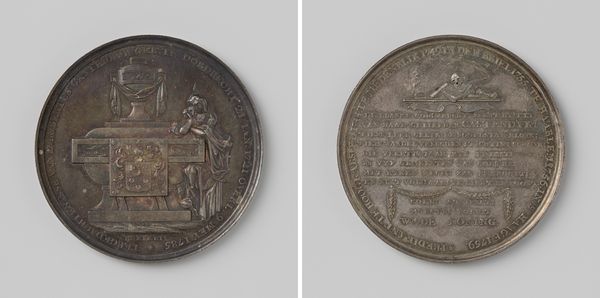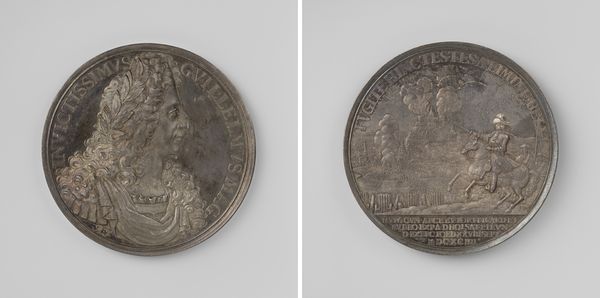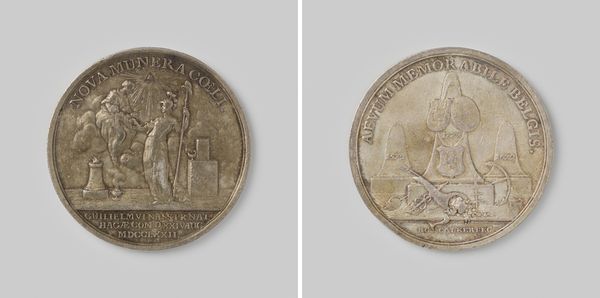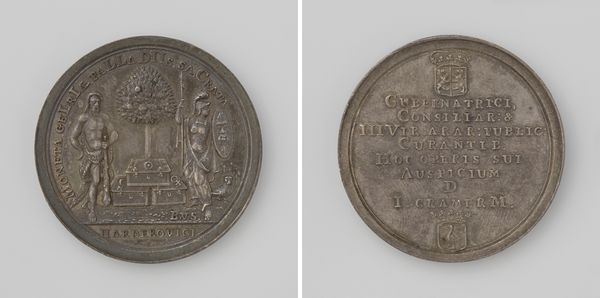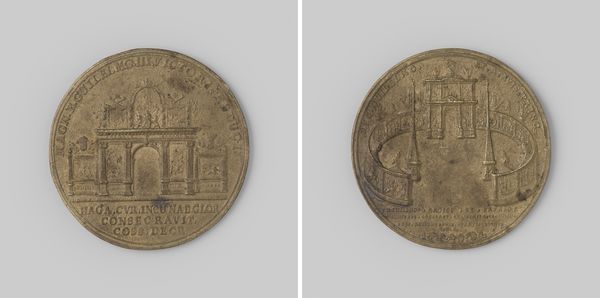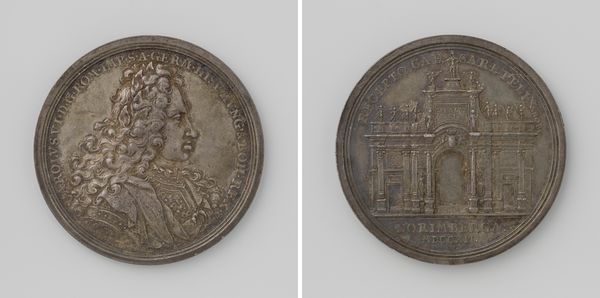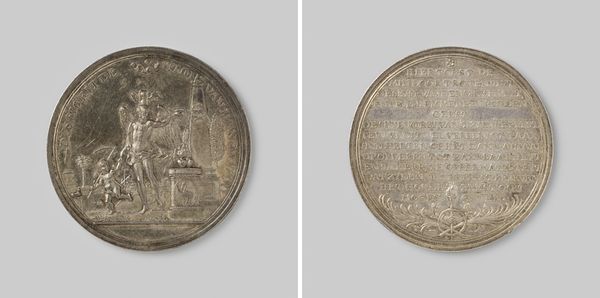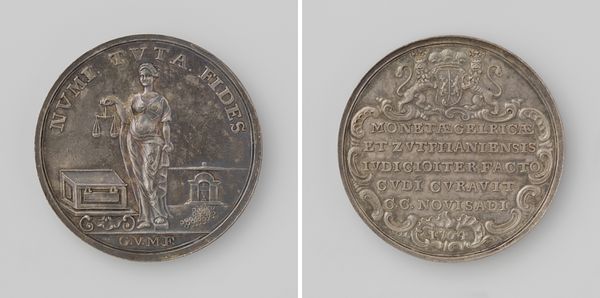
metal, relief, engraving
#
baroque
#
metal
#
sculpture
#
relief
#
figuration
#
carved
#
history-painting
#
engraving
Dimensions: diameter 4.9 cm, weight 46.40 gr
Copyright: Rijks Museum: Open Domain
Editor: So this piece is a metal relief titled *Landing van Stadhouder Willem III te Torbay 1688* by Reynier Arondeaux, dating from 1688. It looks like a coin or medallion. The figures and text seem really important, giving it quite a formal, almost propagandistic mood. What symbols jump out to you? Curator: The overriding symbolic element here is one of triumphant arrival and legitimate claim to power. Notice on one side the allegorical figures, William clasping hands with Justice, representing divinely sanctioned authority. The radiant sunrise behind them hints at a new dawn, a changing era. Editor: I see that! And on the other side, there are boats and a harbor. How does that fit in? Curator: Precisely. The depiction of the landing at Torbay isn't just a historical record, but a symbolic claim. The ships signify power, and the orderly arrangement of figures hints at a controlled, purposeful event. Do you notice anything about the text included? Editor: There's a lot of Latin… it's hard to make it out in the relief. Is there a significance to it? Curator: Absolutely. The inscriptions amplify the symbolism. "Deo Duce, Justicia Comes," translates to "With God as leader, Justice as companion," emphasizing the righteous justification for William's actions. Text served as explicit explanation reinforcing images for broader impact. Editor: It sounds like nothing was left to chance, everything contributes to the narrative. What strikes me most is how, even on something small like a coin, an event could be shaped for posterity. Curator: Exactly! Medals like this were deliberately produced and distributed. They shape historical memory. We are still influenced by the narratives conveyed by these images.
Comments
No comments
Be the first to comment and join the conversation on the ultimate creative platform.
